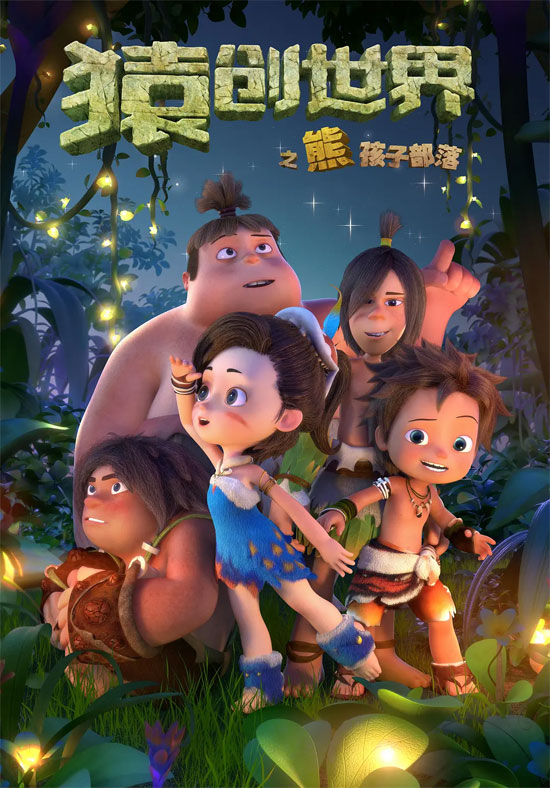Film Name: 猿创世界之熊孩子部落 / The Ape Story

The film’s portrayal of the mischievous little monkey as both brave and resourceful stands in stark contrast to the studio’s own reckless decision to release the film during this particular season.
Xiao Yuan’s ingenious idea of using firefly light to project a moon onto the clouds illuminates not only the girl Lingdang’s heart but the entire film, distracting audiences from its obvious homage to The Croods. This is the film’s crowning touch, though it’s unfortunate it doesn’t occur between the adult protagonists like in The Croods, where such a moment would have made their scenes even more poignant. The purity of their friendship diminishes the romantic undertones in the moonlight’s glow.
Unless I’m mistaken, this appears to be a film without prior brand recognition. In such cases, the relationship between the protagonist and their companion animal requires either a fresh narrative or significant emphasis. For instance, in CJ7, you need to emphasize how that alien creature became best friends with the protagonist. Similarly, in Home, considerable screen time is devoted to explaining how the alien arrived on Earth and met the protagonist. Only films like Roco Kingdom, Pokémon, and Doraemon—which have games, TV animations, or comics as foundational prior knowledge—can avoid laboring over descriptions of the pets themselves.
While the pet Xiao Ke appears to be a highlight design in the film, the lack of foundational exposition leaves audiences thoroughly confused. How did it meet the little monkey and form their pet-owner bond? Why does it suddenly grow to a terrifying size? What kind of creature is it exactly? Even its name, Xiao Ke… none of this is clarified. Thus, audiences finish the film brimming with questions, subconsciously doubting the plot points about Xiao Ke—like its ability to sprout wings and fly—while awkwardly accepting them.
The film’s predominantly flat narrative and overall somber palette make it difficult for viewers to stay engaged, let alone discern the characters’ emotions. Even the opening action sequence of hunting wild boars is depicted with a static quality, let alone the excessively long and exceptionally tedious nighttime trek involving the little ape and the bell.
Brute force and wisdom are portrayed as mutually exclusive entities. The era of primitive brute strength seems destined to be replaced by wisdom. Much like in “The Croods,” where traditionalist thinking is inevitably overturned by innovative ideas. The film concludes with another boar-hunting sequence mirroring the opening, striving to illustrate how wisdom transforms primitive humans.
Despite this narrative, the film is riddled with oversimplifications, making it hard to believe this is a world of primitive humans. Instead, it feels like watching children rescue adults. Is primitive society really just elders, a few strong men, and a bunch of kids? Is their environment just open plains with only wild boars and giant birds? Even the boars—are they really such docile creatures that let humans bully them? So while the film shows some sincerity, it can’t hide the massive weakness in its world-building.
Please specify:Anime Phone Cases » The Ape Story 2016 Animation Film Review: The little rascal is both bold and resourceful.